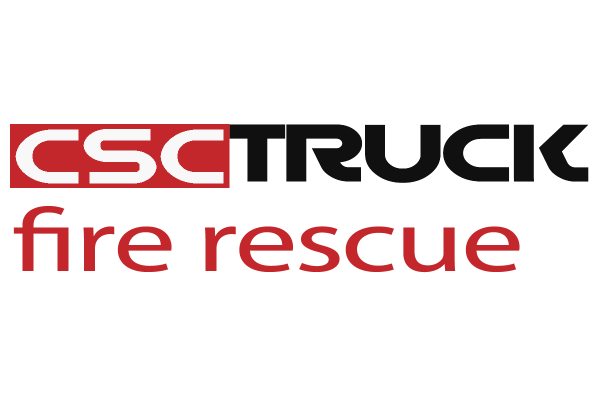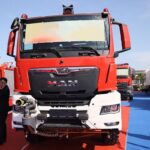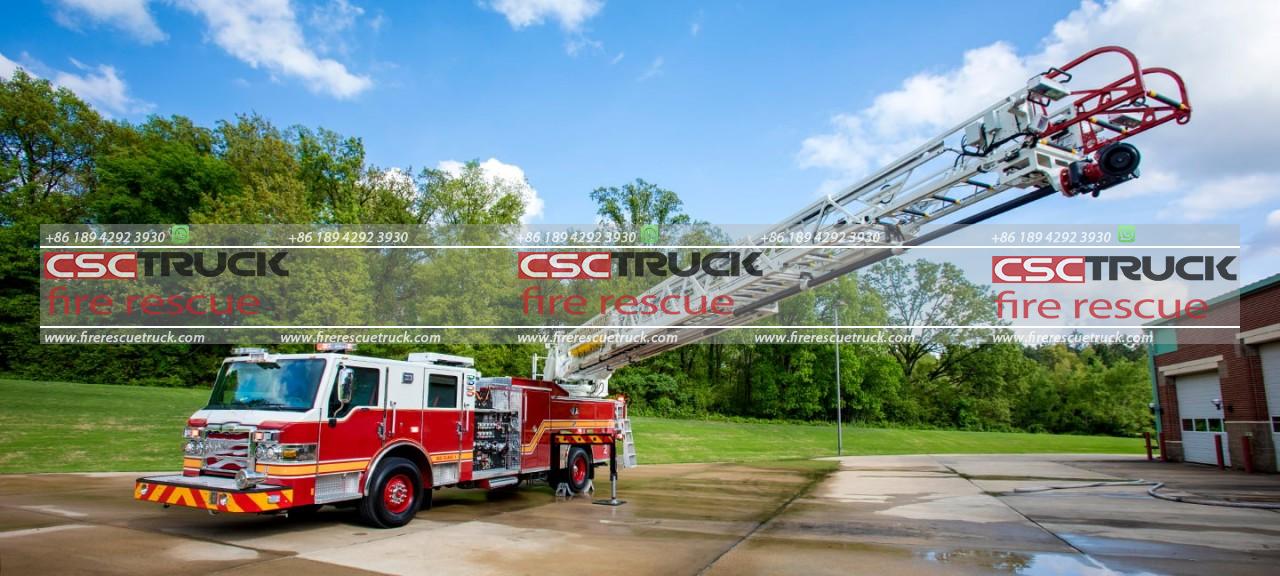Introduction
An aerial ladder truck is a specialized fire apparatus designed to provide elevated access for firefighting, rescue, and ventilation operations. These trucks are a critical component of modern fire departments, allowing firefighters to reach high-rise buildings, perform rescues, and deliver water from elevated positions. Aerial ladder trucks come in various configurations, equipped with advanced technology to enhance safety and efficiency. In this article, we will explore their design, components, types, functions, and operational benefits.
Design and Components
Aerial ladder trucks are built with robust designs to support extended reach and heavy loads. Key components include:
- Chassis – The chassis serves as the foundation, supporting the aerial ladder, firefighting equipment, and onboard personnel. It is typically reinforced to handle additional stress from extended operations.
- Aerial Ladder – The defining feature of these trucks, the aerial ladder is a hydraulically operated telescopic or articulated boom that extends to various heights, commonly ranging from 50 to 135 feet.
- Turntable – The ladder is mounted on a rotating turntable, allowing it to pivot 360 degrees for flexible positioning during firefighting operations.
- Waterway System – Most aerial ladder trucks feature an integrated waterway system with a nozzle at the tip of the ladder, enabling firefighters to deliver water or foam from elevated positions.
- Stabilizers (Outriggers) – To ensure stability during operation, hydraulic outriggers extend from the truck to prevent tipping when the ladder is deployed.
- Cab and Crew Compartment – The cab accommodates the driver and crew members, often featuring advanced communication systems and controls for ladder operation.
- Fire Pump and Hose Connections – Some aerial ladder trucks are equipped with fire pumps and hose connections, allowing them to function as both an aerial apparatus and a pumper.
- Storage Compartments – These compartments house essential firefighting tools, including axes, saws, breathing apparatus, and rescue equipment.
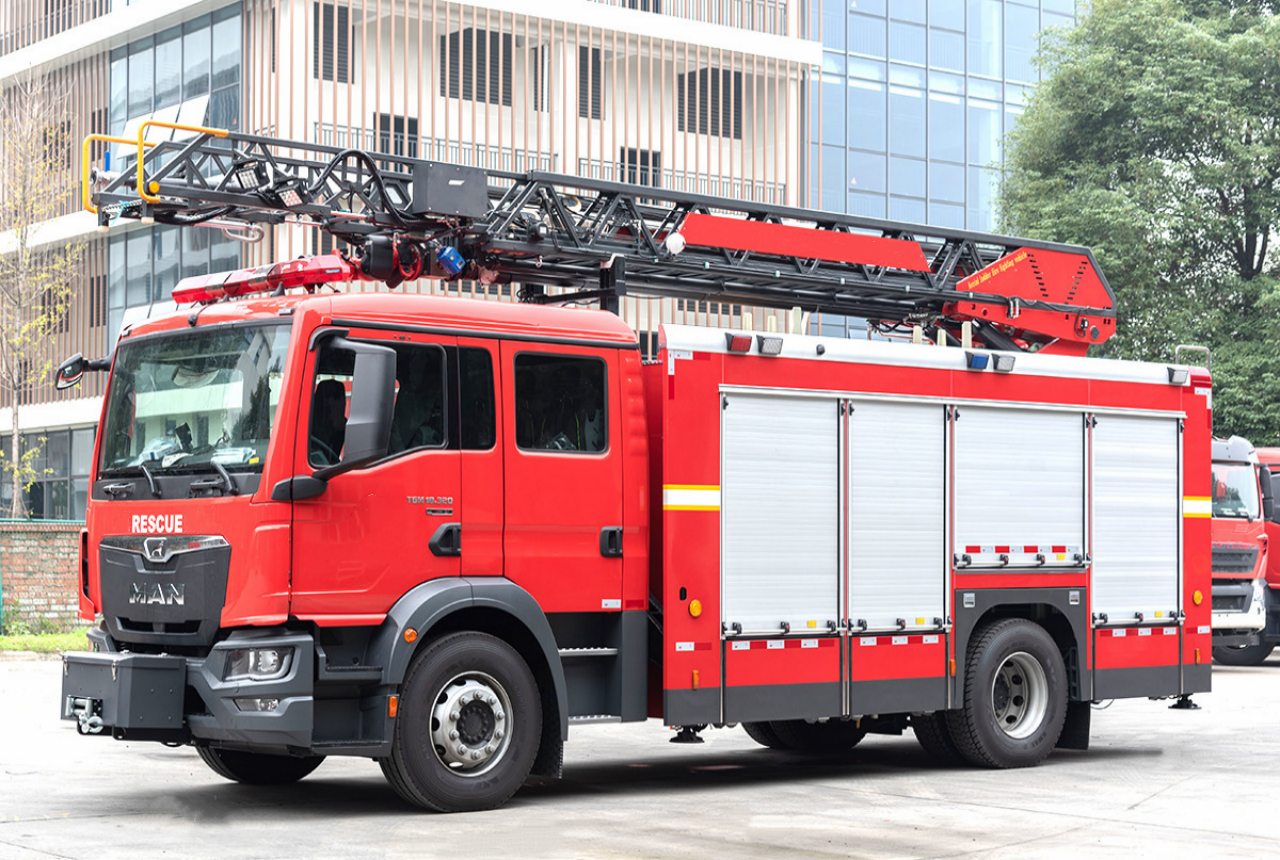
Types of Aerial Ladder Trucks
Aerial ladder trucks come in different configurations, each tailored for specific firefighting needs:
- Straight Aerial Ladder Truck – Features a non-articulating ladder mounted on a turntable. This type is ideal for high-rise firefighting and rescues where a direct approach is feasible.
- Tiller Truck (Tractor-Drawn Aerial) – A long aerial ladder truck with a steerable rear axle, enhancing maneuverability in urban areas with tight streets.
- Platform Ladder Truck (Tower Ladder) – Equipped with a bucket or platform at the tip of the ladder, providing a secure workspace for firefighters during rescues and water application.
- Quint Truck (Quintuple Combination Pumper) – A hybrid fire truck combining the features of an aerial ladder and a pumper, capable of performing multiple functions.
- Articulating Aerial Ladder Truck – Uses a hinged, articulated boom to navigate around obstacles, making it useful for complex rescue operations.
Functions and Applications
Aerial ladder trucks serve various roles in fire suppression, rescue operations, and emergency response. Their primary functions include:
- High-Rise Firefighting – The aerial ladder enables firefighters to access the upper floors of buildings for direct fire attack and ventilation.
- Rescue Operations – These trucks assist in evacuating people trapped in high-rise buildings, including those in burning apartments or office towers.
- Ventilation – Firefighters use aerial ladders to break windows and ventilate smoke-filled buildings, improving visibility and reducing heat buildup inside.
- Water Delivery – The elevated waterway system allows firefighters to apply water from an advantageous height, covering large areas effectively.
- Aerial Observation – The height advantage enables incident commanders to assess fire conditions and direct firefighting efforts more strategically.
- Support in Industrial Fires – Industrial facilities with large storage tanks or warehouses benefit from aerial ladder trucks for fire suppression and containment.
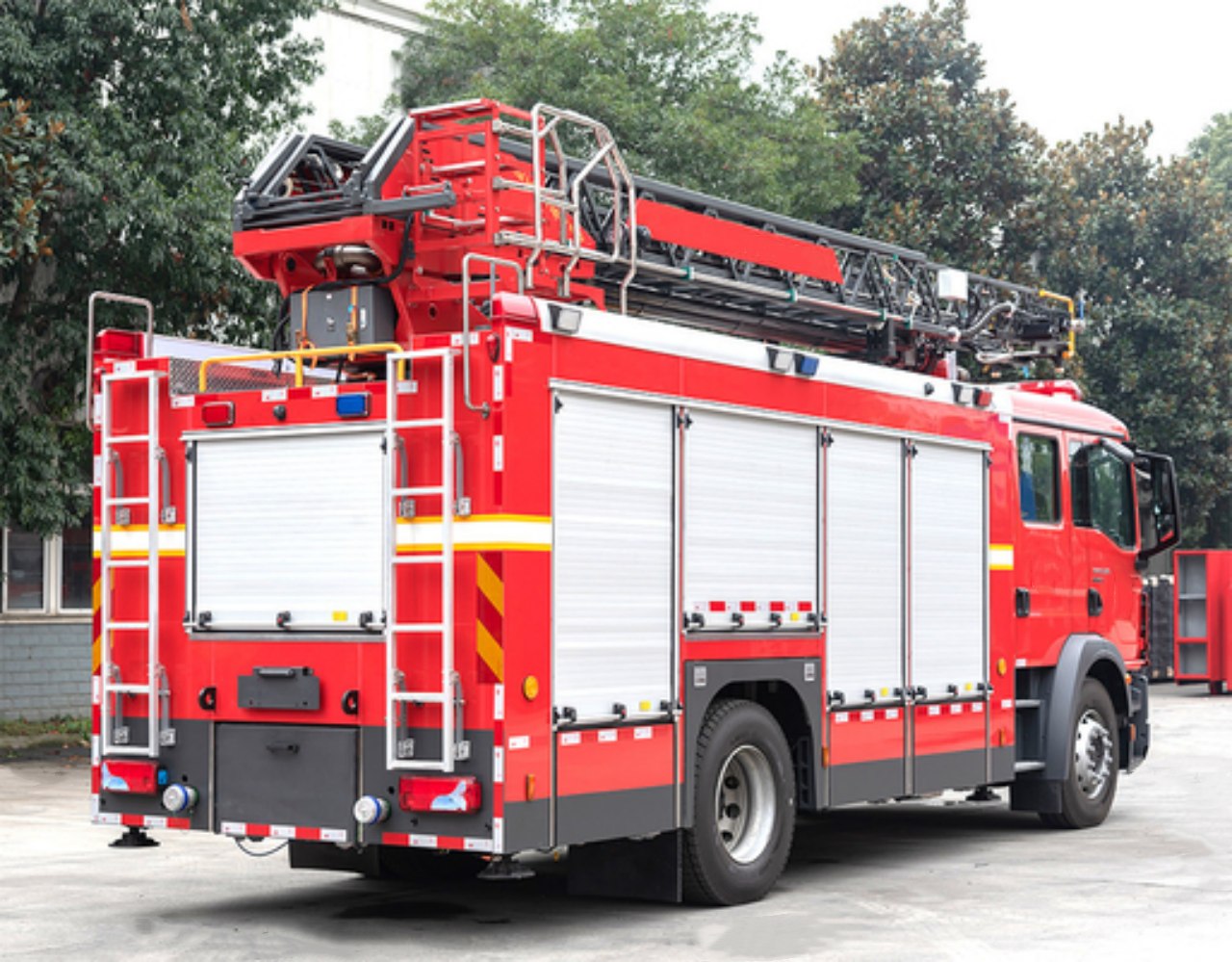
Advantages of Aerial Ladder Trucks
The deployment of aerial ladder trucks offers several advantages in firefighting operations:
- Extended Reach – Provides access to tall buildings and elevated locations where ground-based firefighting is ineffective.
- Enhanced Safety – Reduces the risk for firefighters by offering a stable and elevated platform for rescue and suppression.
- Efficient Water Application – Delivers a continuous water stream at high pressure, increasing the effectiveness of fire suppression.
- Versatility – Can be used in multiple emergency situations, including structural fires, hazardous material incidents, and technical rescues.
- Improved Mobility in Urban Areas – Tiller trucks, in particular, offer exceptional maneuverability in congested city streets.
Considerations for Operation
Operating an aerial ladder truck requires specialized training and adherence to safety protocols. Considerations include:
- Stabilization and Weight Distribution – Ensuring proper deployment of outriggers to prevent truck tipping.
- Weather Conditions – Strong winds, rain, and ice can impact the stability and effectiveness of ladder operations.
- Load Capacity – Understanding the weight limits of the ladder to prevent structural failure.
- Hydraulic System Maintenance – Regular inspections and servicing are necessary to ensure smooth ladder operation.
- Crew Coordination – Effective communication among firefighters is critical to safely and efficiently operate the aerial ladder.
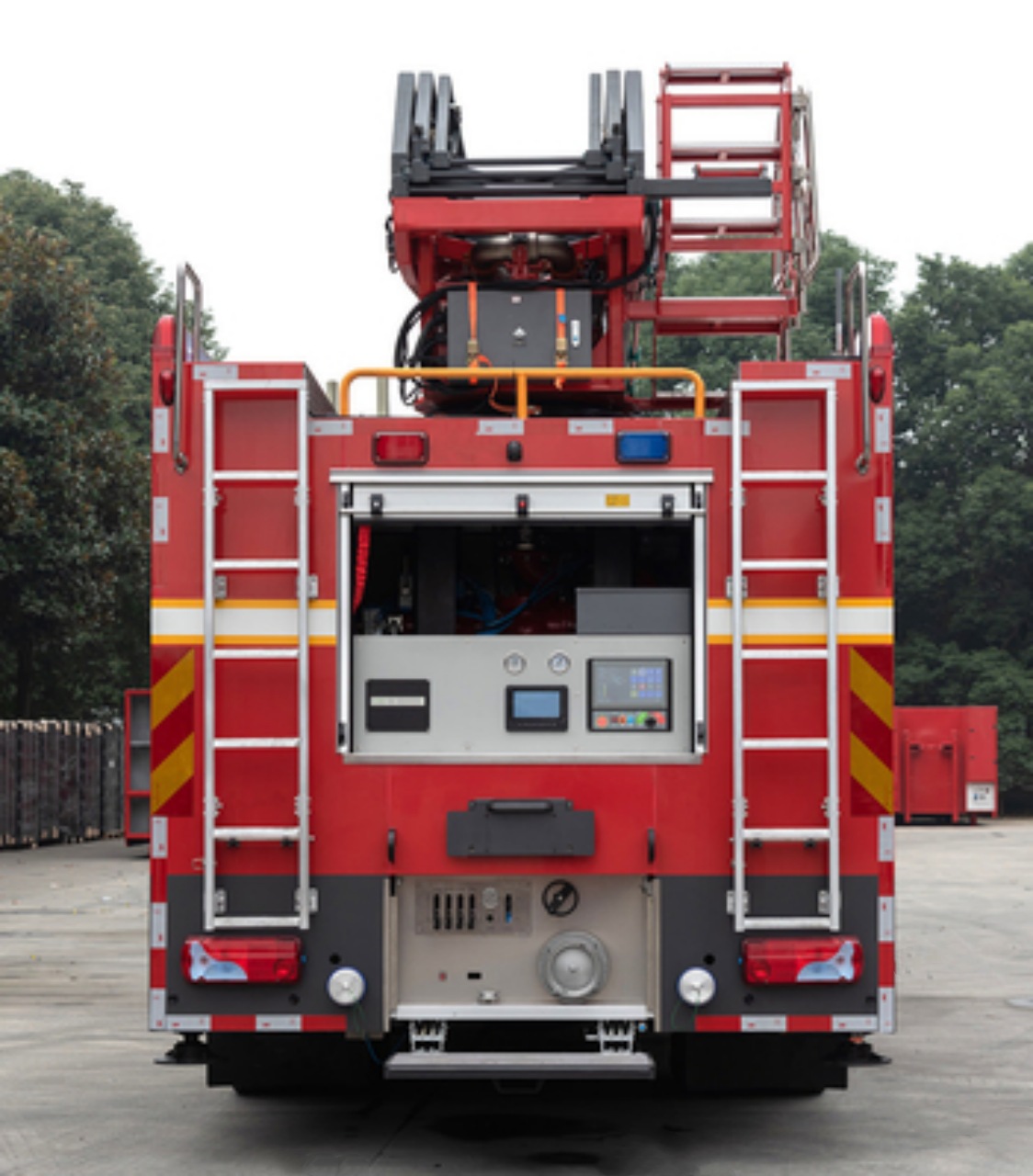
Conclusion
Aerial ladder trucks are indispensable assets in modern firefighting, providing firefighters with the tools needed to combat fires in high-rise buildings and conduct life-saving rescues. With advanced technology and specialized designs, these trucks enhance firefighting capabilities, ensuring greater efficiency and safety in emergency response. Fire departments worldwide rely on aerial ladder trucks to navigate complex urban environments and tackle challenging fire scenarios, making them a vital part of firefighting fleets.
